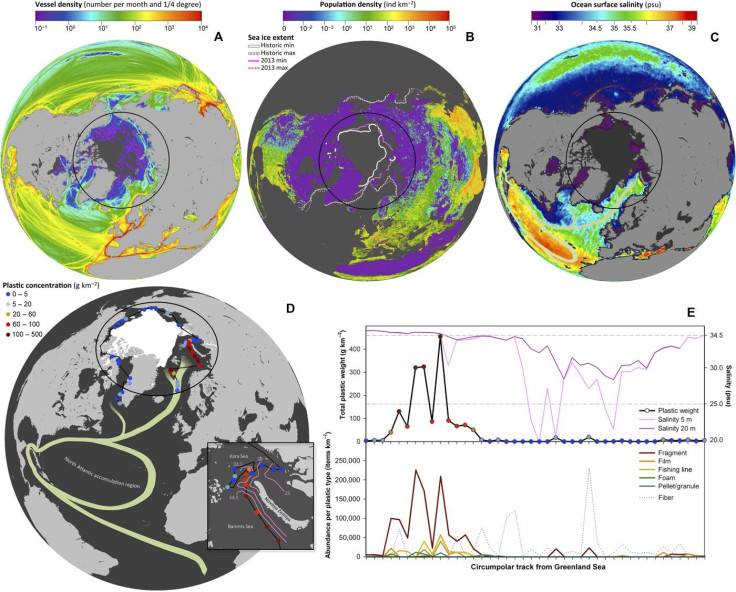Plastic In The Arctic Ocean Making A New Garbage Patch, Thanks To Ocean Currents

The large floating mass of plastic in the northern Pacific Ocean is well-known, and even has a name for itself — the Great Pacific Garbage Patch. While the phenomenon of plastic accumulation in the oceans has been observed for years in subtropical ocean gyres, researchers have found evidence of similar accumulation happening in the Arctic Ocean for the first time.
Polar latitudes were generally considered unlikely candidates as accumulation zones for marine plastic, because the human populations in those regions is very low, and hence can produce only a limited amount of pollution that will make its way to the ocean. However, research has shown the garbage reaches the area due to ocean currents, specifically a global one called Thermohaline Circulation.
Published Wednesday under the title “The Arctic Ocean as a dead end for floating plastics in the North Atlantic branch of the Thermohaline Circulation,” the open-access paper in the journal Science Advances was authored by a large international team of researchers. They found the northern Atlantic Ocean to be the main source from where currents brought the floating debris to the Greenland and Barents seas. They also hypothesized that a large amount of the plastic sinks to the seafloor beneath those waters.
“Maximum concentrations of floating plastic measured in this sector of the Arctic Ocean were considerably lower than those in the subtropical accumulation zones, but the median values were similar, especially in units of number of items,” the study said, adding that large items (bigger than 12.6 millimeter) were relatively few, between 2 and 5 percent.

The study was based on data collected during the 2013 Tara Oceans circumpolar expedition, during which Andrés Cózar and his colleagues — authors of the paper — fished out plastic pieces from 42 sites in the region. The amount of plastic found was quantified in relation to the Mediterranean Sea — which has a very high concentration of plastic, given its proximity to densely populated urban centers — as well as the possible pollution sources near each of those sites.
The move of denser water from the northern Atlantic to the Arctic could be responsible for one layer of water to go under another, carrying some portion of the plastic pieces with it. Researchers don’t have estimates to quantify that, but said the floating plastic in the Arctic likely accounts for about 3 percent of the total plastic floating on global ocean surfaces. However, that number could easily go up, they warned.
“The growing level of human activity in an increasingly warm and ice-free Arctic, with wider open areas available for the spread of microplastics, suggests that high loads of marine plastic pollution may become prevalent in the Arctic in the future,” the paper concluded.
© Copyright IBTimes 2024. All rights reserved.





















